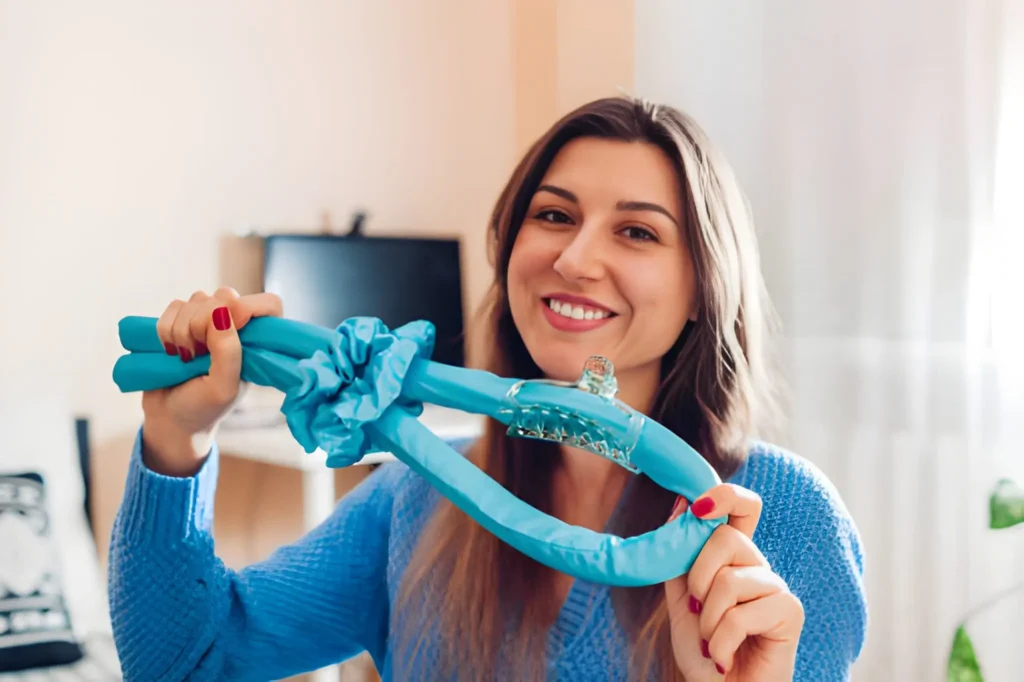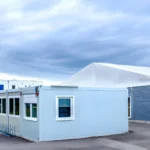Curling irons and wands damage your hair, period. The repeated high heat exposure breaks down protein bonds, dries out natural oils, and over time leaves you with brittle, split-prone hair that looks worse even with styling. Most people accept this as the cost of having curls, but that’s only because heat tools dominated the market for decades. Heatless hair curlers flip that entire assumption on its head by creating lasting curls without any heat whatsoever. These work overnight or during your morning routine, using mechanical tension and hair’s natural tendency to hold shapes when set properly. The results match heat styling in quality while eliminating damage completely, and honestly, once you get the hang of them, they’re way less hassle than standing in front of a mirror with a hot tool burning your fingers.
How Heatless Curling Actually Creates Lasting Waves
Hair holds whatever shape it dries in—that’s basic physics. When you wash your hair and let it air dry without styling, it returns to its natural pattern because that’s the shape the hydrogen bonds reform into. Heatless curlers work by wrapping damp hair around forms or through mechanisms that hold it in a curved pattern while it dries. As moisture evaporates, hydrogen bonds reform in that curved position rather than straight or in your natural pattern.
The key difference from heat styling is time and moisture interaction. Heat styling forcibly breaks bonds with high temperature in seconds, lets you reshape hair, then those bonds reform quickly as hair cools. Heatless methods let bonds reform slowly over hours as hair naturally dries. This gentler process doesn’t damage the protein structure.
Different heatless methods create different curl types. Foam or fabric rollers create classic round curls. Headband-style curlers create loose waves. Rod curlers make tighter, more uniform spirals. The diameter of whatever you’re wrapping hair around determines curl size—thicker forms make looser waves, thinner rods create tighter ringlets.
Material Science Behind Why These Work Better Than You’d Think
Most heatless curlers use foam, fabric, or flexible plastic materials. Foam works well because it’s lightweight and comfortable enough to sleep in, which matters if you’re using them overnight. The compression from foam rollers helps create tension that shapes hair without the rigidity of old-school plastic rollers that dig into your scalp.
Fabric options like satin or silk reduce friction compared to cotton or synthetic materials. Less friction means less breakage and frizz, especially important since hair is more vulnerable when wet. Satin’s smooth surface lets hair slide slightly as it dries rather than catching on rough fibers, which helps prevent the dents or creases that sometimes form with harsher materials.
The fastening mechanisms matter too. Velcro can snag and pull hair. Buttons or ties distribute pressure more evenly. Magnetic closures work great but are less common. Some newer designs skip fasteners entirely, using the weight and wrap pattern to hold themselves in place.
Getting the Moisture Level Right Makes or Breaks Results
This is where most people mess up initially. Hair needs to be damp, not soaking wet or completely dry. Too wet and it won’t dry completely overnight, leaving you with damp curlers in the morning and loose curls that fall out quickly. Too dry and the hydrogen bonds have already reformed in their natural pattern, making it hard to reshape them without heat.
The sweet spot is towel-dried hair with about 60% to 70% of the moisture remaining. Your hair should feel cool and damp but not dripping. Some people mist dry hair with water or a setting spray, which works but generally gives less defined results than starting with recently washed damp hair.
Thick or coarse hair needs more initial moisture because it takes longer to dry completely. Fine hair needs less—sometimes just misting is enough. Climate matters too. Humid environments slow drying, dry climates speed it up. You’ll figure out your optimal moisture level after a few attempts.
Technique Variations for Different Curl Styles
For loose beachy waves, the headband method works really well. You place a fabric headband across your head and wrap sections of hair around it, securing with pins if needed. This creates gentle waves without defined curl patterns. Leave it for 6 to 8 hours and you get that effortlessly wavy look people spend money on at salons.
Traditional foam or flexi-rod curlers give you more control over curl size and placement. Section your hair into pieces—smaller sections create more defined curls, larger sections give softer waves. Roll each section around the curler from ends toward roots, then secure. Working in a pattern helps ensure even results. Most people start at the bottom and work up, doing back sections before moving to sides and front.
Braiding is technically a heatless curling method too. A single braid creates subtle waves. Multiple small braids give you crimped texture. Twist braids (two-strand twists) create different patterns than three-strand braids. This method requires zero equipment beyond hair ties and takes minutes to set up.
Why Overnight Application Works Better Than Daytime
Sleeping in heatless curlers sounds uncomfortable but modern designs minimize the awkwardness. The main advantage is time—you’re getting 6 to 8 hours of set time without dedicating any waking hours to the process. Hair has plenty of time to dry completely and the bonds to fully reform.
Daytime application works too but requires more attention to hair moisture and timing. If you’re working from home or have a flexible schedule, putting in curlers after a morning shower and removing them before afternoon calls can work fine. You need at least 3 to 4 hours minimum though, and hair must start damp enough to still be setting but dry enough to finish drying in that timeframe.
Some people do weekly curl sessions—deep condition, set curlers overnight, then maintain the curls for several days with dry shampoo and gentle refreshing. This reduces how often you’re manipulating hair and lets you stretch time between washes.
Product Compatibility and What Actually Helps
Hair products interact differently with heatless curling compared to heat styling. Light mousse on damp hair helps hold curl formation without creating crunchiness. Too much mousse and you get stiff, unnatural-looking results. A quarter-size amount distributed through shoulder-length hair is usually enough.
Setting sprays designed for wet hair work better than ones formulated for dry hair. Check the label—some specifically say to apply to damp hair. These typically contain polymers that help hair hold shape as it dries. Avoid heavy oils or leave-in conditioners right before curling because they can prevent complete drying overnight.
After removing curlers, resist the urge to brush aggressively. Gently separate curls with your fingers or use a wide-tooth comb if needed. A light finishing spray helps combat humidity and extends curl life. Some people swear by a tiny amount of argan or coconut oil on ends only, which can reduce frizz without weighing down curls.
Also Read-Vidwud AI: Transforming Online Body Swap and Talking Photo Technology



